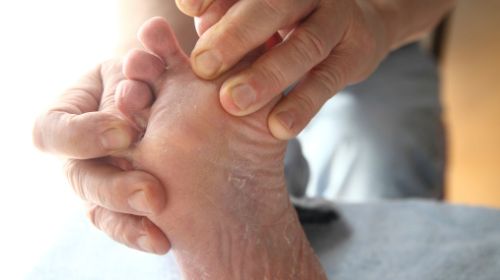Type 1 diabetes mellitus is a chronic disease in which the pancreas no longer produces insulin. Those affected must inject insulin for the rest of their lives. Read here what the causes of type 1 diabetes are and what symptoms the disease can be recognized by.
- © Getty Images/Azman Jaka
Quick overview
What is the difference between type 1 and 2 diabetes? Type 1 diabetes is an autoimmune disease in which the immune system destroys the insulin-producing beta cells in the pancreas. Type 2 diabetes, on the other hand, is usually characterized by insulin resistance, in which the body can no longer use insulin properly.
What are the symptoms of type 1 diabetes mellitus? Typical symptoms include intense thirst, frequent urination, unwanted weight loss, fatigue and, in some cases, vision problems.
What happens if you have type 1 diabetes? With type 1 diabetes, the body no longer produces insulin, which means you have to take insulin daily to regulate blood sugar levels.
When does type 1 diabetes occur? The disease can start at any age, but often occurs in childhood or adolescence.
Article contents at a glance:
What is type 1 diabetes?
Type 1 diabetes mellitus is an autoimmune disease in which the immune system mistakenly attacks and destroys the insulin-producing cells in the pancreas. This leads to a lack of insulin, a vital hormone. It regulates blood sugar levels by promoting the absorption of glucose (dextrose) from the blood into the cells.
Without insulin, however, the sugar remains in the blood. This leads to an increase in blood sugar levels and causes a number of problems that can also be life-threatening. To avoid this, people with type 1 diabetes must inject insulin daily. Since this form of diabetes cannot be cured, they have to do this for life.
Type 1 diabetes usually begins in childhood, adolescence or young adulthood and is therefore also called juvenile diabetes. But this form of diabetes can also develop in old age.
How common is type 1 diabetes mellitus?
According to the German Diabetes Society, around 340,000 adults and 37,000 children and adolescents live with type 1 diabetes in Germany. Every year, more than 3,000 young people up to the age of 17 suffer from it. Type 1 diabetes occurs significantly less frequently than type 2 diabetes. This affects around 8.5 million people in this country, with the number of unreported cases being at least 2 million.
Type 1 diabetes: recognizing and correctly interpreting symptoms
Elevated blood sugar leads to physical problems. At the beginning of the disease, these are not always immediately noticeable, especially because the signs are very non-specific and can have many reasons. This often results in a seemingly sudden outbreak of the disease.
The main warning signs of elevated blood sugar levels include:
- constant thirst
- Frequent urge to urinate, sudden bedwetting in children
- significant weight loss in a short period of time
- persistent fatigue
In addition, other symptoms can occur with type 1 diabetes. These include:
Complications: ketoacidosis and diabetic coma
If you don’t react to the warning signs early and take appropriate countermeasures, you risk blood sugar levels going off the rails. If the blood sugar level is significantly elevated (hyperglycemia, hyperglycemia), impaired consciousness and even loss of consciousness (diabetic coma) can occur. This is an acute emergency situation.
But low blood sugar (hypoglycemia) can also have dangerous consequences and also lead to loss of consciousness. Possible triggers are
- an overdose of insulin,
- Insufficient food intake – skipping meals or insufficient intake of carbohydrates
- or increased physical activity.
What is the difference between type 1 and 2 diabetes?
Type 1 diabetes: causes and risk factors
Insulin is produced in the pancreas in so-called beta cells. In people with type 1 diabetes, the immune system mistakenly attacks and destroys these cells. This can happen very quickly within a few months or develop slowly over several years. In any case, there is an absolute insulin deficiency.
Why some people are affected by this is still largely unknown. Genes can play a role. In around 10 percent of patients, the predisposition to type 1 diabetes lies in a close relative. Also environmental influences such as
are suspected as triggering factors for type 1 diabetes.
In addition to the autoimmune process, there is another very rare form called idiopathic type 1 diabetes. In this form, those affected have a permanent insulin deficiency, but do not show any immunological changes in the form of antibodies. The problem is that these people very often experience severe hyperglycemia (ketoacidosis).
Possible consequences of diabetes
In addition, people with type 1 diabetes have an increased risk of developing other autoimmune diseases, such as
Diagnosis when type 1 diabetes is suspected
If diabetes remains undetected and untreated, it can be life-threatening. If diabetes is suspected, the doctor will test the blood sugar levels with several blood tests.
These include casual blood sugar, fasting blood sugar and long-term blood sugar HbA1c. If the fasting blood sugar level is too high, diabetes mellitus is suspected. Long-term blood sugar can also be used to determine the blood sugar concentration over the past few weeks.
Therapy for type 1 diabetes
Type 1 diabetes is treated with insulin therapy to replace the missing insulin in the body. This is done through insulin injections, either using a syringe, insulin pen or an insulin pump. Part of the treatment also includes regular checking of blood sugar levels so that the insulin dose can be individually adjusted to the diet or activity level.
With consistent treatment, symptoms such as extreme thirst, frequent urination or blood sugar imbalances can be avoided. Secondary illnesses can also be prevented.
What can those affected do themselves?
With type 1 diabetes, it is important that patients learn how to deal with the disease. Training programs offered by clinics or specialized diabetological practices provide support. In the diabetes training courses, they learn how to correctly measure blood sugar, administer insulin and recognize low or high blood sugar levels.
They also receive advice on how to deal with diabetes in everyday life, during exercise and in diet, for example how to calculate insulin requirements based on the carbohydrate content of foods. There are often special training programs for children.
Course and prognosis of type 1 diabetes mellitus
The disease cannot be cured, which is why those affected are dependent on insulin therapy for the rest of their lives. However, it is possible to live a normal life with type 1 diabetes.
Well-controlled blood sugar and a healthy lifestyle with regular exercise and a balanced diet help diabetics keep the disease under control. It is also important to check your long-term blood sugar (HbA1c) regularly and have medical check-ups in order to adjust the treatment if necessary and to identify any problems at an early stage.
However, poorly controlled diabetes and strong and frequent fluctuations in blood sugar affect the body and damage the blood vessels over time. This increases the risk of secondary illnesses
However, with good blood sugar control, these long-term consequences can be avoided.


